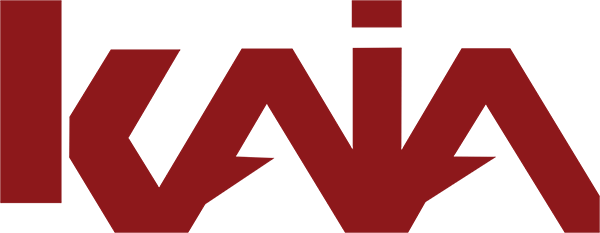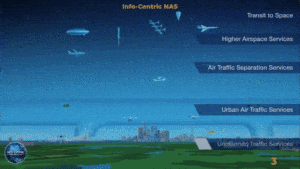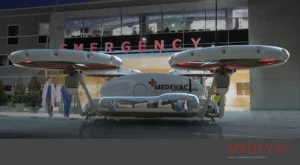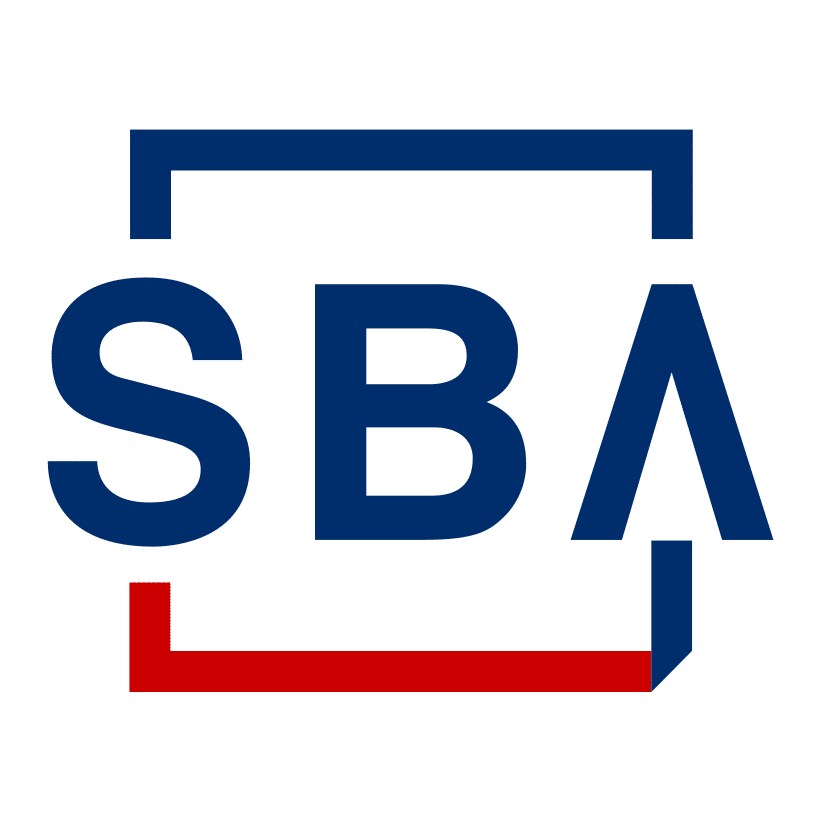Principles: Rapid Prototyping, User Feedback, and Continuous Improvement
Iterative design allows teams to create innovative, successful products through a cycle of ongoing improvement[1]. This article offers a complete understanding of iterative design for engineers, touching on principles, processes, benefits, and limitations. Additionally, we will examine how to apply this method effectively, the significance of minimal viable products (MVPs), and real-life examples of iterative design in engineering.
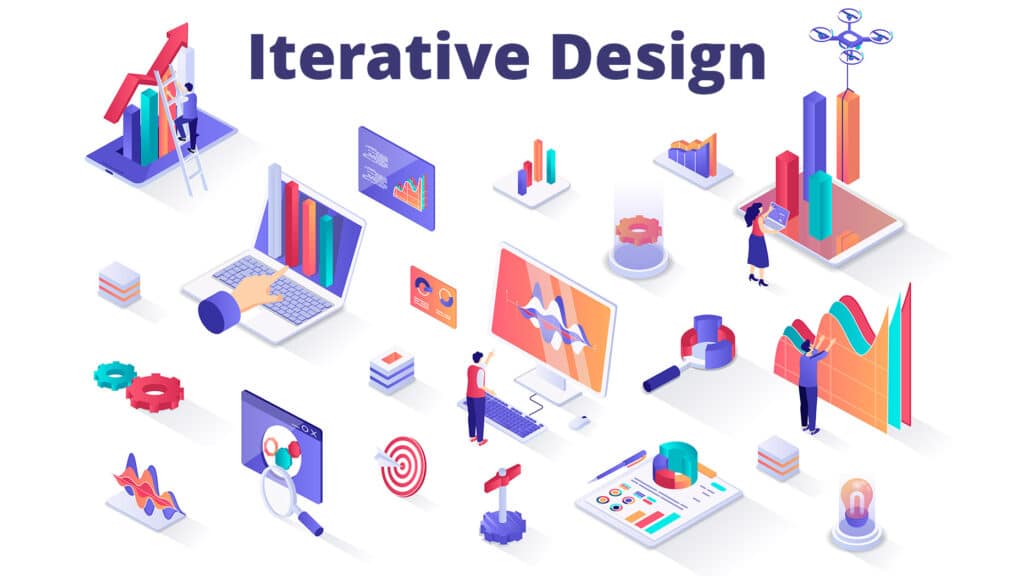
Rapid Prototyping
Rapid prototyping is crucial for engineering project managers as it allows them to quickly develop a functional model of a product or system. This expedites the testing and refining process, ensuring that time and resources are used efficiently. Rapid prototyping enables project managers to identify potential issues and make necessary adjustments earlier in the development cycle, thus reducing risks and costs.
Sketches and wireframes
Creating simple, hand-drawn or digital representations of the product’s layout and design can help visualize the initial concept and facilitate discussions among team members.
Digital prototypes
Using computer-aided design (CAD) software or other digital tools, project managers can create more detailed and accurate models of the product or system.
Physical prototypes
Depending on the nature of the project, creating a physical prototype using 3D printing or other fabrication methods can help the team understand the product’s functionality and user experience more effectively.
User Feedback
User feedback is vital for engineering project managers, as it enables them to better understand the needs and preferences of the target audience. By incorporating feedback into the design process, project managers can ensure that the final product or system is user-centric, which can lead to increased satisfaction, adoption, and success.
Gathering User Feedback
Engineering project managers can gather user feedback through various methods
Surveys and questionnaires
Distributing online or paper-based surveys to users can provide valuable insights into their preferences, expectations, and pain points.
Interviews and focus groups
Conducting one-on-one interviews or group discussions with users can help project managers gather in-depth information about their experiences and opinions.
Usability testing
Observing users as they interact with a prototype or an existing product can provide essential insights into potential usability issues and areas for improvement.
Continuous Improvement
Continuous improvement is an integral part of the iterative design process, ensuring that the product or system undergoes constant refinement based on user feedback and testing results. Engineering project managers who embrace continuous improvement can foster a culture of innovation, collaboration, and adaptability within their teams, ultimately leading to more successful and competitive products.
Strategies for Continuous Improvement
Engineering project managers can adopt several strategies to promote continuous improvement in their projects, such as:
Regular reviews and retrospectives
Scheduling periodic meetings to evaluate the project’s progress, identify areas for improvement, and discuss potential changes can help the team stay aligned and focused on their goals.
Agile methodologies
Implementing agile project management techniques, such as Scrum or Kanban, can promote adaptability, collaboration, and iterative progress throughout the development cycle.
Performance metrics and KPIs
Establishing and tracking key performance indicators (KPIs) related to the project’s objectives can help the team make data-driven decisions and prioritize their efforts for maximum impact.
Advantages and Limitations of Iterative Design
Iterative design has many advantages, including better user experience, reduced risk, flexibility, efficient resource allocation, and faster time-to-market[3]. However, it is not suitable for all projects. It might not work well for projects with limited resources, time constraints, or strict regulations[4].
Implementing Iterative Design Effectively
Implementing iterative design effectively requires a cross-functional team, clear goals, agile methodologies, and a culture of collaboration and continuous improvement[5]. The MVP concept is essential in iterative design, allowing engineers to test assumptions and gather user feedback with minimal investment[6].
References
- Smashing Magazine – Design Better, Faster with Iterative Design
- Interaction Design Foundation – Iterative Design
- UX Planet – The Benefits of Iterative Design
- ResearchGate – When to Use and Not to Use Iterative Design Process
- Bright Hub PM – Agile Methods for Iterative Design
- ScienceDirect – Minimal Viable Product
Iterative Design Process
The iterative design process consists of five stages which are Define, Design, Develop, Test, and Iterate. These expand into subsections.
Stage 1: Define
Identify the Problem or Opportunity
During the Define stage, engineering project managers should identify the problem or opportunity their project aims to address. This involves gathering relevant data, conducting market research, and analyzing user needs and pain points. A clear understanding of the problem or opportunity ensures that the project is focused and well-directed.
Establish Project Goals and Objectives
After identifying the problem or opportunity, project managers must establish the goals and objectives of the project. These should be specific, measurable, achievable, relevant, and time-bound (SMART). Clearly defined goals and objectives provide a framework for decision-making and help to align the team’s efforts throughout the iterative design process.
Stage 2: Design
Develop Potential Solutions
In the Design stage, project managers and their teams brainstorm potential solutions to the problem or opportunity they’ve identified. This process should encourage creativity and collaboration, allowing team members to contribute their expertise and insights.
Create Conceptual Models
Once potential solutions have been identified, project managers can guide their teams in creating conceptual models of each option. These models help visualize the proposed solutions and facilitate comparisons between them.
Select the Most Promising Option
With conceptual models in hand, project managers can lead their teams in evaluating the proposed solutions and selecting the most promising option. This decision should be based on factors such as feasibility, cost, potential impact, and alignment with the project’s goals and objectives.
Stage 3: Develop
Build a Prototype or Working Model
In the Develop stage, project managers oversee the creation of a prototype or working model of the chosen solution. The prototype should be functional enough to test and gather user feedback but may not include all the final product features.
Stage 4: Test
Gather User Feedback
During the Test stage, project managers gather user feedback on the prototype. This can be done through surveys, interviews, focus groups, or usability testing. User feedback helps identify areas for improvement and ensures that the final product meets user needs and expectations.
Assess Prototype Performance
Project managers should also assess the prototype’s performance against the project’s goals and objectives. This may involve collecting quantitative data, such as performance metrics, or qualitative feedback from users and team members.
Stage 5: Iterate
Refine the Design Based on Feedback and Test Results
In the Iterate stage, project managers guide their teams in refining the design based on the feedback and test results. This may involve making adjustments to the prototype, re-evaluating the selected solution, or exploring new ideas.
Repeat the Process Until the Desired Outcome is Achieved
The iterative design process is cyclical, with the Test and Iterate stages repeating until the project’s goals and objectives are met. This approach ensures continuous improvement and enables project managers to deliver a final product that is both user-centric and successful.
By following these five stages of the iterative design process, engineering project managers can effectively lead their teams in developing innovative, user-focused solutions that address the identified problem or opportunity.
Advantages of Iterative Design
Iterative design brings many rewards for engineering project managers. It improves user experience, cuts development risk, and boosts flexibility. It makes resources use efficient and quickens time-to-market. All these gains lead to success and a competitive edge in engineering ventures.
Enhanced User Experience
Iterative design emphasizes the importance of user feedback throughout the development process. By actively involving users and considering their needs and preferences, project managers can ensure that the final product offers a user-centric experience, increasing satisfaction and adoption rates.
Optimal User Experience
By focusing on users’ needs and continuously refining the product based on their feedback, iterative design helps to create an optimal user experience. This approach leads to more successful and competitive products, ultimately benefiting both users and the engineering team.
Reduced Development Risk
Iterative design allows project managers to identify and address potential issues early in the development process. By resolving problems before they become more significant and costly, project managers can reduce overall project risk and maintain control over the development timeline.
Cost and Time Savings
Addressing issues early on in the iterative design process can lead to cost and time savings. By identifying and resolving problems before they escalate, project managers can avoid costly redesigns and maintain momentum throughout the project.
Flexibility to Adapt to Changes
Iterative design promotes flexibility by allowing engineering teams to adapt to changes in user requirements, technology advancements, and market conditions. This responsiveness is essential for staying competitive and innovative in today’s rapidly evolving landscape.
Innovation and Competitiveness
The adaptability of the iterative design process encourages innovation and helps project managers to stay ahead of the competition. By remaining open to new ideas and embracing change, project managers can guide their teams in developing cutting-edge products and solutions.
Efficient Resource Allocation
Iterative design enables project managers to prioritize the most critical aspects of a project, ensuring that resources are allocated effectively. By concentrating on high-impact improvements, project managers can maximize the return on investment and control costs.
User Feedback for Prioritization
User feedback plays a crucial role in determining which improvements should be prioritized. By incorporating user input into decision-making processes, project managers can make informed choices about resource allocation and ensure that the project remains focused on addressing users’ needs.
Faster Time-to-Market
The iterative design process, with its emphasis on rapid prototyping and continuous improvement, can accelerate the development process. This faster pace allows products to reach the market more quickly, giving project managers and their teams a competitive advantage.
Higher Quality Products
Iterative design’s focus on user feedback and continuous improvement leads to higher quality products. By refining the product throughout the development process, project managers can ensure that the final product meets or exceeds user expectations, contributing to its overall success in the market.
When Not to Use Iterative Design
While iterative design offers numerous benefits, it may not be the best approach for every engineering project.
Simple, Well-Defined Projects
For projects with clear requirements and straightforward solutions, a traditional, linear development process may be more appropriate.
Strict Deadlines and Budget Constraints
Iterative design may not be suitable for projects with tight deadlines or limited budgets, as it requires ongoing refinement and user feedback, which can be time-consuming and costly.
Limited Availability of End-Users for Feedback
If access to end-users for feedback is limited or not possible, the iterative design process may be less effective, as it relies heavily on user input to drive improvements.
Highly Regulated Industries
Projects in industries with strict regulations and compliance requirements may be less suited to iterative design, as the continuous changes and adaptations could make it more challenging to adhere to established guidelines.
Implementing Iterative Design in Engineering Projects
To effectively incorporate iterative design into your engineering projects, consider the following steps:
Assemble a Cross-Functional Team
Bring together a team with diverse expertise, including engineers, designers, and product managers, to collaborate on the project and ensure a holistic approach.
Establish Clear Goals and Objectives
Define the problem or opportunity, outline the desired outcome, and set measurable objectives to guide the iterative design process.
Use Agile Project Management Methodologies
Adopt agile methodologies, such as Scrum or Kanban, to support the iterative design process and promote flexibility, collaboration, and continuous improvement.
Involve End-Users Throughout the Process
Engage with users at every stage of the iterative design process to gather valuable feedback and insights that will inform improvements and refinements.
Prioritize and Plan Iterations
Identify the most critical aspects of the project and prioritize improvements based on user feedback to ensure that resources are allocated efficiently and effectively.
Foster a Culture of Collaboration and Continuous Improvement
Encourage open communication and teamwork among team members and create an environment where learning, experimentation, and adaptation are valued.
The Minimal Viable Product (MVP) Concept
A Minimal Viable Product (MVP) is a version of a product with just enough features to satisfy early users and gather feedback for future development. It is crucial in iterative design because it allows engineers to test their assumptions and learn from users’ experiences with minimal investment.
Identifying the Core Features for an MVP
Determine the essential features that address the primary user needs and objectives, focusing on functionality rather than aesthetics or advanced features.
The Role of MVP in Iterative Design
The MVP serves as the starting point for the iterative design process, enabling teams to gather user feedback, identify areas for improvement, and refine the product in subsequent iterations.
Case Studies: Successful MVPs in Engineering
Examples of successful MVPs in engineering include early versions of the SpaceX Falcon 1 rocket, the first-generation Apple iPhone, and the initial Tesla Roadster, all of which served as foundations for more advanced and refined products.
Challenges for Iterative Design
- Implementing iterative design can present some obstacles, such as:Scope creep: The risk of the project expanding beyond its original objectives as new features or improvements are added.
- Inadequate documentation: A lack of clear and up-to-date documentation can make it difficult to track changes and maintain a consistent vision throughout the iterative process.
- Resistance to change: Some team members may be hesitant to embrace the iterative approach, preferring traditional, linear development methods.
Best Practices for Iterative Design
- To overcome these challenges and maximize the benefits of iterative design, consider the following best practices:Establish clear communication channels: Ensure that team members can easily share information, ideas, and feedback to support effective collaboration and decision-making.
- Encourage proactive problem-solving: Promote a culture where team members are empowered to identify and address potential issues or obstacles as they arise.
- Set realistic expectations and deadlines: Establish achievable goals and timelines for each iteration to avoid overextending resources and maintain focus on the project’s core objectives.
- Continuously evaluate and refine the process: Regularly assess the effectiveness of the iterative design process and make adjustments as needed to improve efficiency and outcomes.
Measuring the Success of Iterative Design Projects
The success of iterative design projects for engineering project managers is not determined by chance, but by measuring the right Key Performance Indicators (KPIs) and adapting based on data and feedback. Quantitative and qualitative feedback can be collected and analyzed through a range of tools and techniques, including surveys, interviews, and analytics software. The insights gathered from this data must be used to implement changes in future iterations of the design process, promoting continuous learning and improvement. In this section, we will explore how engineering project managers can measure the success of iterative design projects and the importance of iteration in the long-term success of engineering projects.
Key Performance Indicators (KPIs)
User Satisfaction and Engagement
One critical KPI for iterative design projects is user satisfaction and engagement. This measures how well the final product meets users’ needs and expectations. Feedback can be gathered through surveys, focus groups, or user testing, with metrics such as Net Promoter Score (NPS) and Customer Satisfaction (CSAT) commonly used to quantify user satisfaction.
Time-to-Market
Another important KPI for engineering project managers is time-to-market, which assesses the speed at which the product is developed and released to the market. A shorter time-to-market can give a competitive advantage, and it can also help to reduce development costs.
Return on Investment (ROI)
Finally, ROI is a crucial KPI for any project. Engineering project managers should evaluate the financial benefits of the project in comparison to the resources invested. This includes not only monetary benefits but also the intangible benefits such as increased brand recognition, customer loyalty, or employee satisfaction.
Collecting and Analyzing Data
Quantitative and Qualitative Feedback
To effectively measure KPIs, engineering project managers must gather both numerical data and subjective insights from users. This includes both quantitative feedback, such as performance metrics or usage statistics, and qualitative feedback, such as user surveys or interviews. By collecting both types of feedback, project managers can make informed decisions based on both objective data and subjective user experiences.
Tools for Data Collection and Analysis
To collect and analyze data effectively, engineering project managers can use a range of tools and techniques. These may include surveys, interviews, analytics software, and usability testing. Data analysis tools, such as Excel or Google Sheets, can help to identify patterns and trends in the data, while visualization tools, such as Tableau or Power BI, can help to communicate the findings effectively.
Techniques for Identifying Patterns and Trends
Data analysis is only valuable if it leads to actionable insights. Engineering project managers can use techniques such as trend analysis, cluster analysis, or regression analysis to identify recurring issues, areas for improvement, and user preferences. These insights can then guide future iterations of the design process.
Adapting and Improving Based on Findings
Implementing Changes in Future Iterations
One of the most critical aspects of the iterative design process is implementing changes based on the insights gathered from user feedback and data analysis. Engineering project managers must use the findings to inform refinements and enhancements in subsequent design iterations. By embracing continuous improvement, project managers can ensure that the final product meets users’ needs and expectations effectively.
Continuous Learning and Improvement
Engineering project managers must recognize that the iterative design process is an ongoing journey of learning, growth, and adaptation. Teams should continuously gather feedback and analyze data to identify areas for improvement and adjust the design accordingly. This approach fosters a culture of innovation and collaboration, which can lead to more successful and competitive products.
The Importance of Iteration in the Long-Term Success of Engineering Projects
Finally, engineering project managers must recognize that iterative design plays a critical role in maintaining a competitive edge, fostering innovation, and delivering high-quality, user-centric products. By prioritizing user feedback, data analysis, and continuous improvement, project managers can create products that meet users’ needs effectively, resulting in long-term success.
The Future of Iterative Design in Engineering
Iterative design has become a staple in the engineering industry, providing a framework for continuous improvement and innovation. As technology advances and user needs evolve, the future of iterative design in engineering looks bright. In this section, we’ll explore some of the latest trends and developments in iterative design, including the role of artificial intelligence, the growing importance of sustainability, and the emergence of new design tools and technologies. Through these innovations, engineering project managers can continue to enhance their ability to develop successful and user-centric products.
Artificial Intelligence (AI) and Machine Learning
AI and machine learning technologies have the potential to transform the iterative design process for engineering project managers. By automating data analysis, identifying patterns, and generating design recommendations, AI can accelerate the testing and refining process, enabling project managers to make data-driven decisions with greater accuracy and efficiency.
Virtual and Augmented Reality (VR/AR)
VR and AR technologies can also enhance the iterative design process for engineering project managers. These technologies can provide more immersive and interactive prototyping, testing, and user feedback sessions, enabling engineers to gain deeper insights into user experiences and preferences. VR and AR can also help project managers visualize and test design options in a more realistic and dynamic environment.
Digital Twins and Simulations
Advanced simulations and digital twin technology can help engineering project managers streamline the iterative design process even further. By creating virtual replicas of products or systems, engineers can rapidly test and refine designs in a simulated environment before creating physical prototypes. This reduces development time and costs and enables project managers to iterate more quickly and effectively.
The Evolving Role of Iterative Design
As technology and user expectations continue to evolve, engineering project managers must embrace iterative design as a way to adapt, innovate, and deliver increasingly complex and sophisticated products. Iterative design enables project managers to address new challenges and opportunities more effectively, ensuring that their products remain competitive and relevant in a constantly changing market.
Iterative design can also foster innovation and creativity within engineering teams. By encouraging collaboration, experimentation, and feedback, iterative design can help project managers push the boundaries of what is possible and explore new ideas. This approach can lead to breakthrough solutions that may not have been possible with a more traditional design approach.
Finally, iterative design can support the development of sustainable and resilient engineering solutions. By incorporating feedback and continuous improvement into the design process, project managers can create products and systems that are more energy-efficient, sustainable, and resilient to change. This approach can also help to reduce waste and increase the lifespan of products, benefiting both the environment and end-users.
Final Thoughts
Iterative design is a powerful approach that can help engineers develop innovative, user-centric products and systems. By embracing the principles of rapid prototyping, continuous improvement, and user feedback, engineering teams can minimize risk, adapt to change, and bring their projects to market more quickly and successfully. As technology and user needs continue to evolve, the importance of iterative design in engineering will only increase, making it essential for professionals to continually refine their skills and practices in this area.
Key Takeaways
- iterative design is a cyclical process that involves prototyping, testing, and refining a product or system based on user feedback.
- This approach offers several advantages, including enhanced user experience, reduced development risk, flexibility, efficient resource allocation, and faster time-to-market.
- It’s essential to recognize when iterative design may not be the best approach and consider alternative methods, such as linear development or concurrent engineering.
- Implementing iterative design effectively requires assembling a cross-functional team, setting clear goals, adopting agile methodologies, and fostering a culture of collaboration and continuous improvement.
- The Minimal Viable Product (MVP) concept plays a crucial role in the iterative design process by allowing engineers to test assumptions and gather user feedback with minimal investment.
- Measuring the success of iterative design projects involves tracking key performance indicators, collecting and analyzing user feedback, and making data-driven decisions to refine the design process.
- Emerging technologies and trends, such as AI, VR/AR, and digital twins, will continue to shape the future of iterative design in engineering, driving innovation and more sustainable, resilient solutions.
